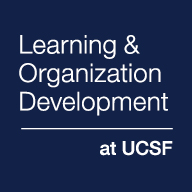
Professional Development Guide
Professional development refers to the process of identifying goals and learning new skills to help you grow and succeed at work. This may lead to a promotion or change in job, or simply to doing better in a current position. Wherever it leads you, professional development includes these elements:
- Your vision of success
- Competencies required to succeed
- Feedback with assessments
- Your individual development plan
Whether you are ready to take the necessary steps towards your own learnining and growth, or you are a manager supporting the development of your team members, this guide is designed to take you through each of these 4 elements.
Workbook
Use the workbook to complete exercises during the professional development planning process outlined below:
1. Create a vision of success
Create or refine your vision of future professional success by identifying your work values, assessing your work experience, and creating a vision of success. Whether or not you already have an idea of your professional goals, these activities provide the foundation for an effective professional development plan.
Identify Your Work Values
The first step in defining your vision of future professional success is to examine your work values. Work values are the qualities about our work that we hold dear.
Examples of work values
Questions to help you identify your work values: to help you explore your work values, read the following questions, then write your answers in your workbook (Section 1).
What are your intrinsic values?
What are your extrinsic work values?
What are your lifestyle values?
Work Experience Assessment
Now review some highlights of your work experience, and use that experience to explore the type of work you might prefer.
Work Experience Assessment
Vision of Success
Resources for Setting Your Direction
Congratulations! You’ve created a personal vision of professional success.
For additional ideas about setting your direction, explore these resources:
Work Values
Career Visioning
2. Identify competencies required to succeed
Now that you have a vision of professional success, the next step is to “translate” it into the most important skills you will need to make your vision a reality. When those skills have observable outcomes, they are called “competencies”. Every job requires proficiency in particular competencies in order to be performed successfully. In this section, you will explore the most common competencies required for professional success, and identify the competencies required to make your personal vision of success a reality.
Competencies Needed for Any Job
Core competencies are the general skills that could be required to succeed in any job. Commonly defined core competencies that are valued in professionals at UCSF and aligned with the mission, vision and values of the University of California are:
Belonging and Community
Change Agility
Collaboration
Communication
Continuous Improvement
Continuous Learning
Mission and Vision Focus
Problem Solving
Service Focus
Stewardship
Job-Specific Competencies
In order to succeed in a particular type of job, you need to be good at competencies specific to that job. For example, an architect must know how to draw and interpret blueprints.
To see job-specific competencies at UCSF, review "Knowledge, Skills, or Abilities" (KSAs) for your current and/or aspirational job via: Career Tracks job standards
Other ways to find job-specific competencies needed to succeed in your role:
- Look at your most recent performance review
- Ask your manager
- Observe colleagues who you think are good role models for the job
Translate Your Vision and Explore Competencies
Now it’s time to define the competencies required to succeed according to your vision.
Record the job-specific and core competencies that you have learned are necessary to succeed in your vision in the "Identifying Core Competencies" worksheet in your workbook (Section 4 and 4a).
Informational Interviewing
3. Seek feedback through assessments
Now that you have an idea what core competencies are required to make your vision of success a reality, it’s time to assess your strengths and weaknesses. In this section, you will assess yourself using the UCSF Core Competency Self-Assessment, and learn how to ask for feedback from colleagues.
Take the UCSF Core Competency Self-Assessment
A simple and useful way to evaluate yourself in the core competencies required to succeed professionally.
Core Competency Self-assessment
After you have completed the assessment, keep it for your future reference.
Feedback From Colleagues
Another good source of information about yourself is gathering feedback from colleagues who are familiar with your work.
Asking for feedback
Receiving feedback
360 degree evaluation
Write what you learn from feedback gathered in the "Feedback Worksheet' on Section 5 of your workbook.
4. Craft your individual development plan
Setting your professional development goal addresses your strengths and weaknesses in the competencies required to succeed according to your vision. This development plan also includes the steps and resources you need to reach that goal, and the time needed to get there.
Define Your Development Goal
Pick a Competency for your Goal
Write a Goal Statement
SMART Goals
Check out development programs to find learning activities, paths and certifications relevant to developing your competencies:
Writing Your Individual Development Plan
Now that you’ve written a goal statement, complete these elements of the Development Planning Worksheet in your workbook (Section 7).
Goal Description
Applicable Talents & Strengths
Competency to Develop
Possible Activities
Resources For Creating an Individual Development Plan
Once you have written your individual development plan, it’s essential to stay focused and follow through on it.
- Video (3 minutes): Setting SMART Goals
- Share your plan with your manager. By making your plan “public” in this way, your commitment to it will be higher.
Performance Management Process eCourse - Share your plan with a peer or mentor. A colleague at work can also give you feedback about your plan, support and ask you about your progress periodically.
UCSF Mentorship Programs
Questions or feedback?
[email protected]
